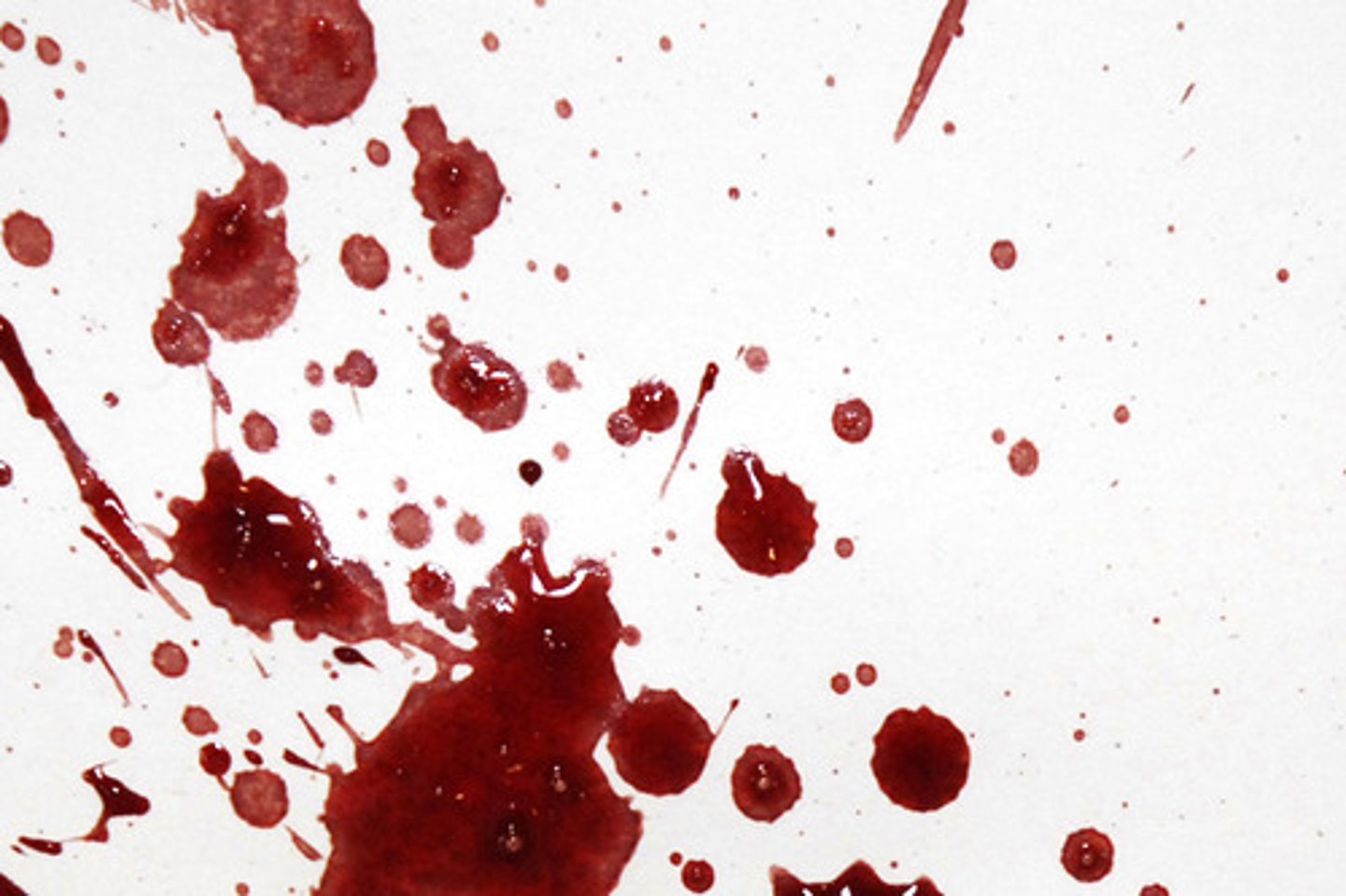Blood Spatter Patterns
1/9
There's no tags or description
Looks like no tags are added yet.
Name | Mastery | Learn | Test | Matching | Spaced |
|---|
No study sessions yet.
10 Terms
Passive Drop
Bloodstain drop(s) created or formed by the force of gravity acting alone.
DESCRIPTION:
This pattern was generated by allowing blood to drip off the tip of a finger approximately 45 cm above the target. The finger was moved slightly between each drop.
When the blood drop (a sphere) strikes a flat target (a plane) the shape formed on the surface by the blood drop is an ellipse. In cases where the impact angle is 90° the ellipse has the same major and minor axes length which is a circle. Passive drops will vary in shape and size depending on the volume of blood and the surface texture, but will generally be circular.
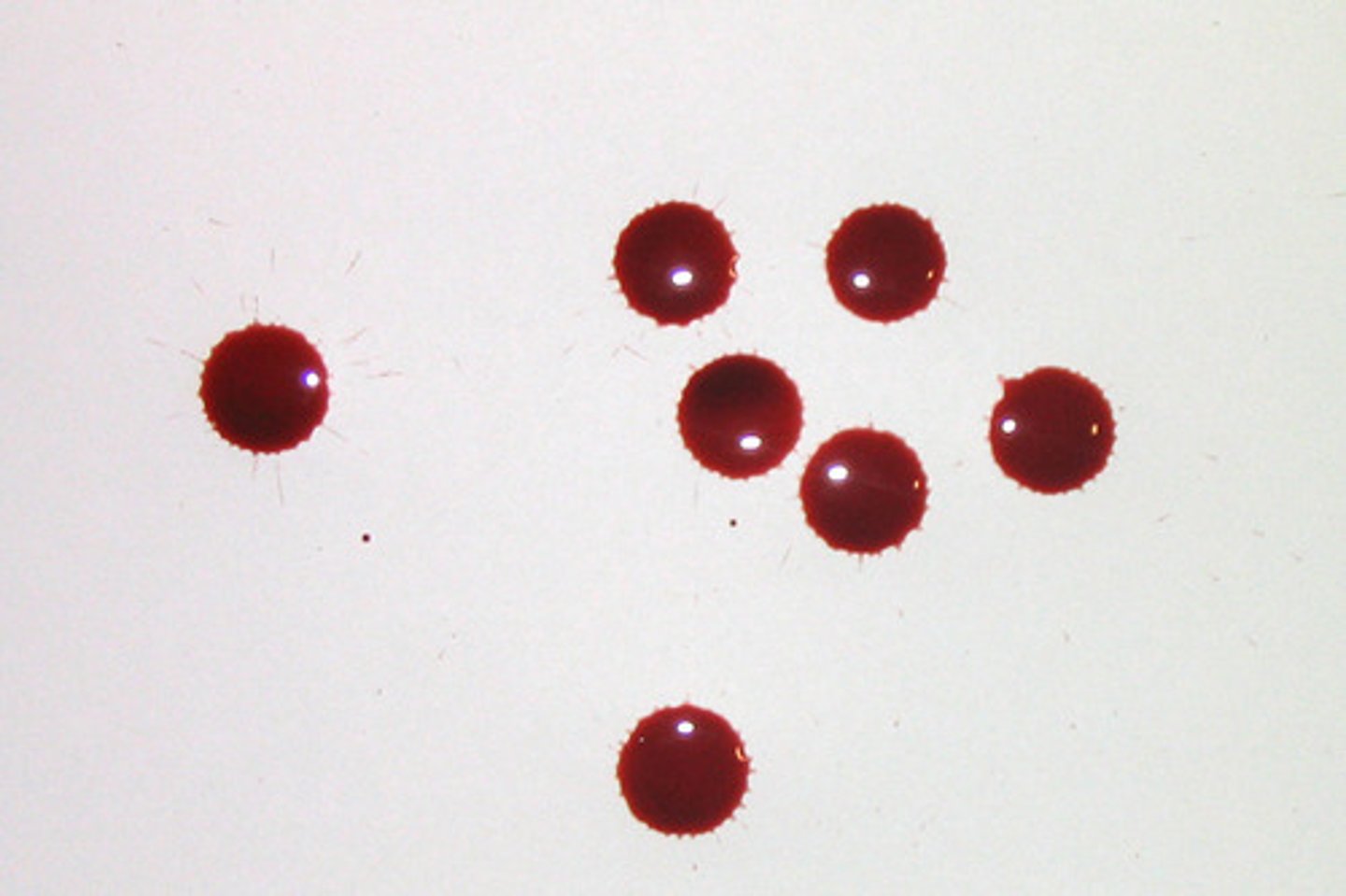
Drip Pattern
A bloodstain pattern which results from blood dripping into blood.
DESCRIPTION: This example was generated by letting blood drip from the end of small-bore syringe approximately 100 cm above the target. The position of the source was kept constant.
As a sufficient volume was generated at the center of the pattern, the blood began to fall into blood. This created secondary spatter also known as satellite spatter. This secondary spatter radiated out from the parent stain in all directions.
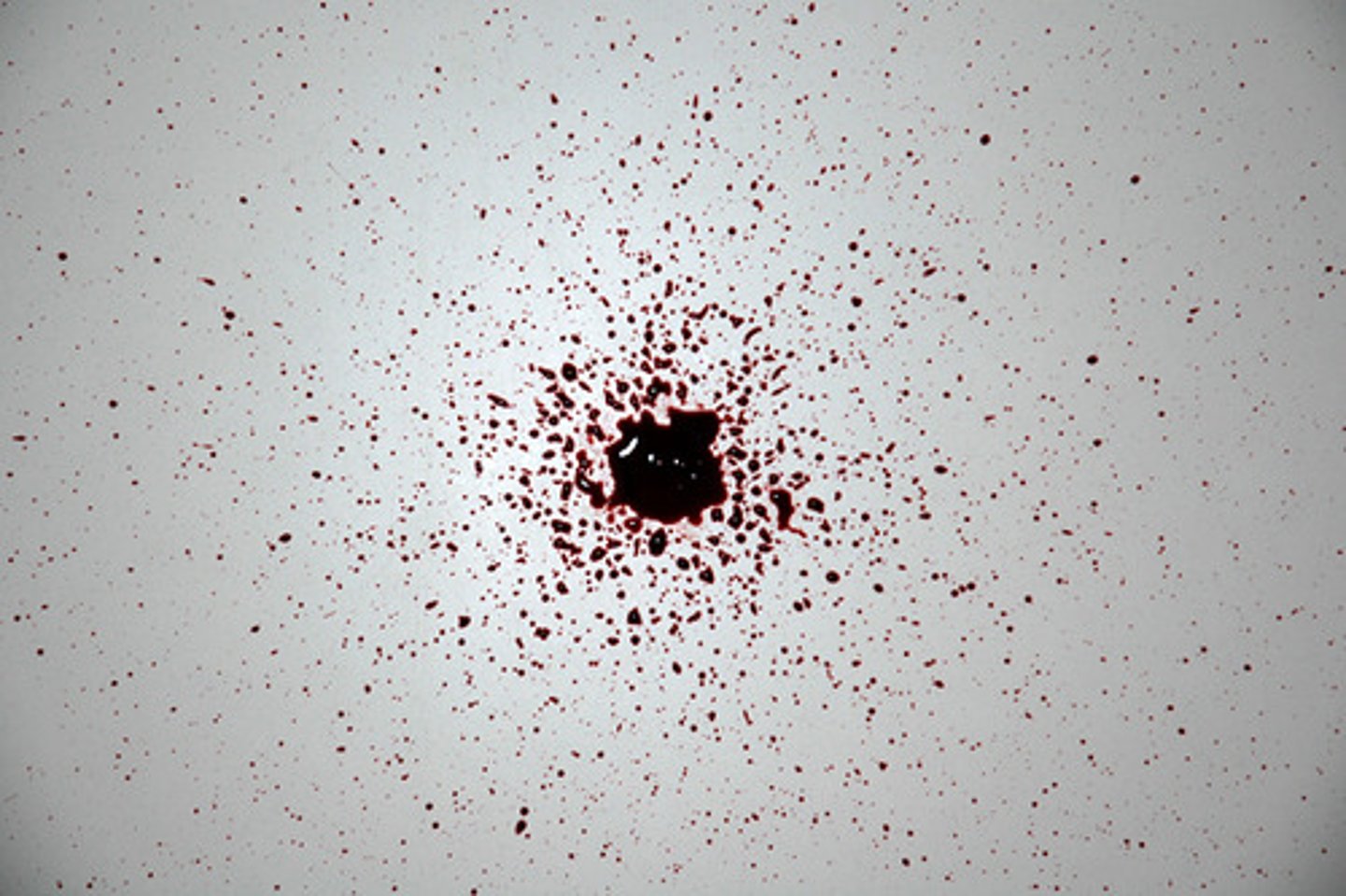
Flow Pattern
A change in the shape and direction of a bloodstain due to the influence of gravity or movement of the object.
DESCRIPTION: This pattern was generated by drawing blood into a large-bore syringe and projecting it at the target.
There was enough volume to allow the excess blood to collect and flow down the target.

Pool
A bloodstain pattern created when a source of blood remains stationary over a surface causing an accumulation of blood.
DESCRIPTION: This pattern was generated by placing a source of blood approximately 2 cm from the target and keeping it there to accumulate enough volume.
A pool of blood may be formed if there is enough blood in the source and it is not too far from the target. As the source is raised from the target it more likely will form a drip pattern. However if there is sufficient volume the drip pattern can be obscured and all that remains is the pool of blood.
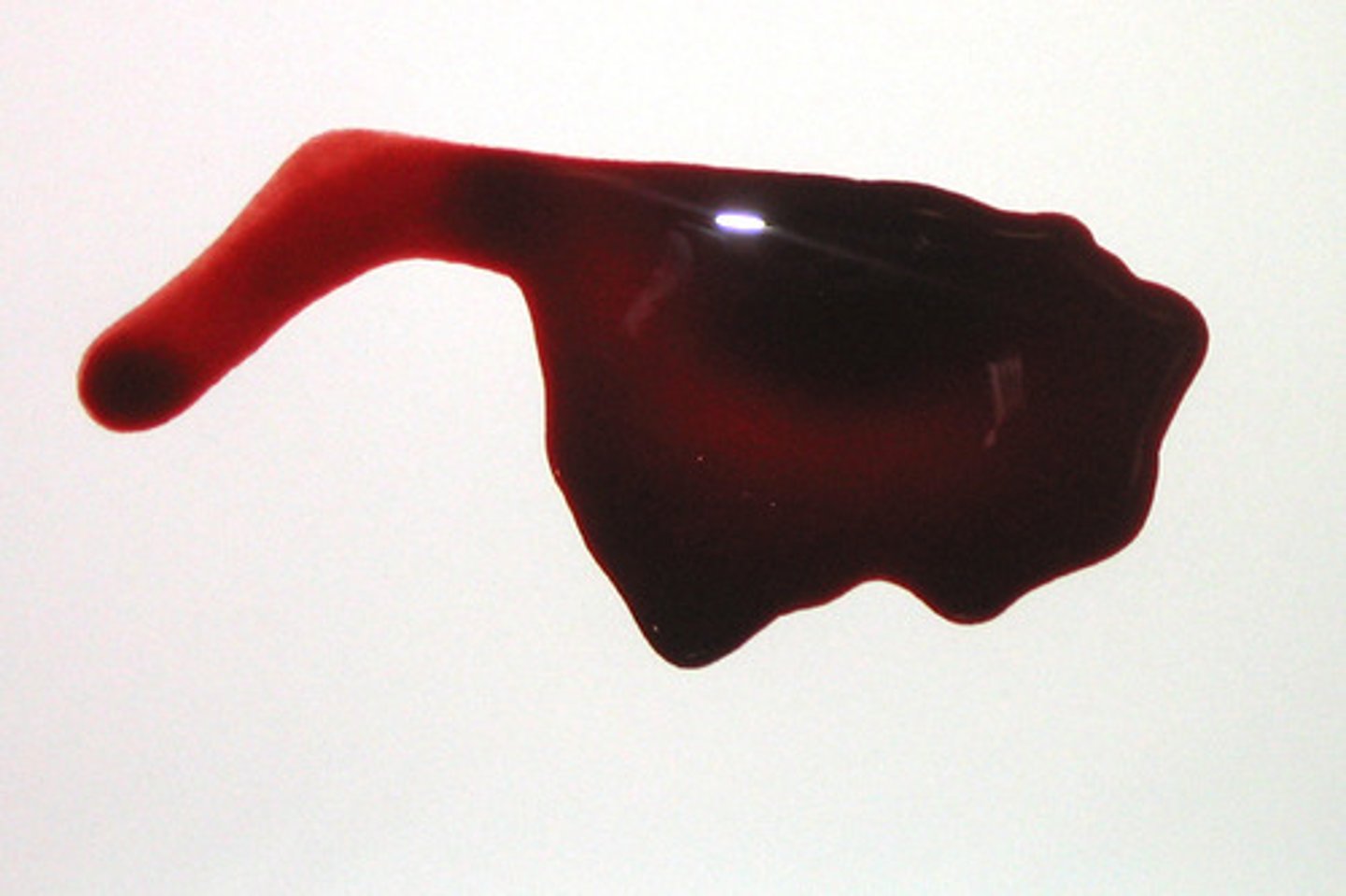
Transfer/Contact Pattern
A bloodstain pattern created when a wet, bloody surface comes in contact with a second surface. A recognizable image of all or a portion of the original surface may be observed in the pattern.
DESCRIPTION: This pattern was generated by wiping blood on the bottom of a shoe and stepping on the target.
When a wet bloodied object comes in contact with a non-bloodied surface, some blood will be transferred from the object to the surface. In some cases the resulting transfer pattern may have enough detail to identify the object that created the stain.
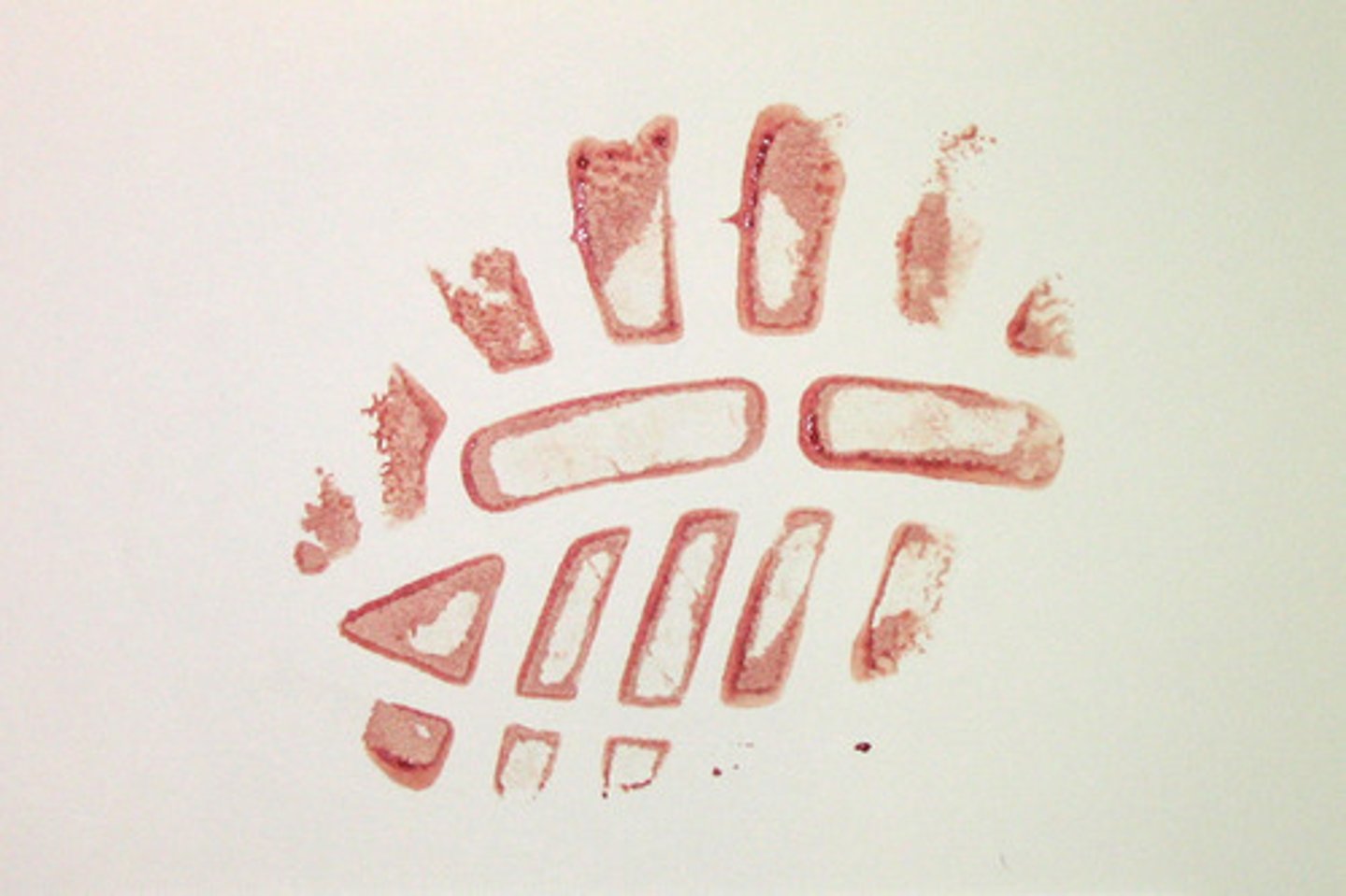
Swipe Pattern
The transfer of blood from a moving source onto a unstained surface. Direction of travel may be determined by the feathered edge.
DESCRIPTION: This pattern was generated by placing blood on the four fingers of the right hand and dragging them across the stationary target.
When a wet bloodied object comes in contact with a non-bloodied surface, some blood will be transferred from the object to the surface. In this example the direction of travel may be determined by examining the feathering present at the end of each finger swipe. The directionality of the action is down and to the right.

Wipe Pattern
A bloodstain pattern created when an object moves through an existing stain, removing and/or altering its appearance.
DESCRIPTION: This pattern was generated by putting several passive stains on a target and dragging the four fingers of the right hand through the stains before they were dried.
Bloodletting scenes can be quite dynamic and wipe patterns are common. It may be possible to determine the direction of travel of an object that created the wipe pattern.

Arterial Spurting Pattern
Bloodstain pattern(s) resulting from blood exiting the body under pressure from a breached artery.
DESCRIPTION: This pattern was generated by drawing blood into a large-bore syringe and projecting it at the target.
The shape of arterial patterns can vary greatly but all deal with blood leaving the body under pressure. Patterns may have a series of large spurts as a result of larger wounds or they may be snake-like if the wound is smaller or restricted.
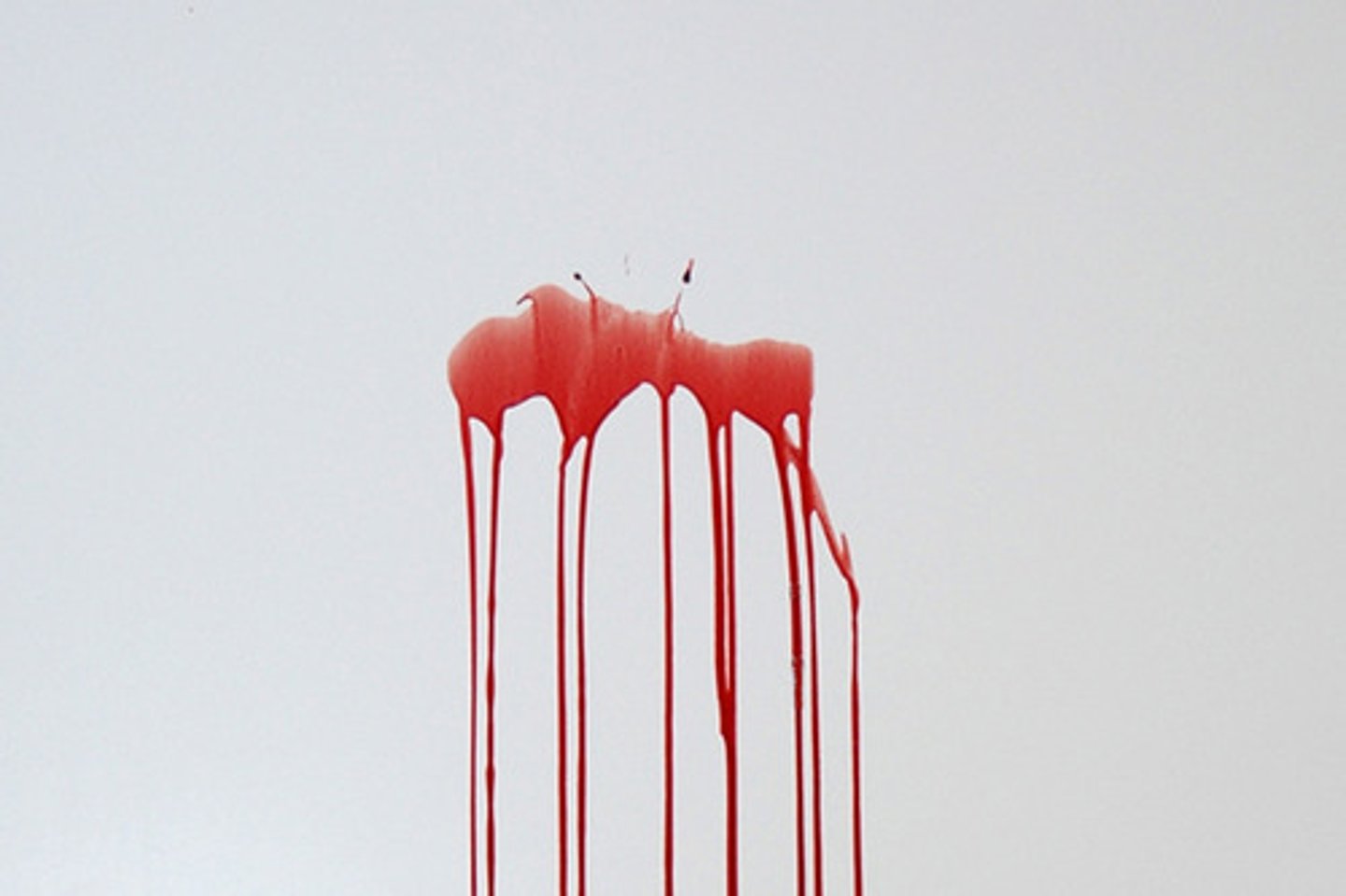
Cast-off Pattern
A bloodstain pattern created when blood is released or thrown from a blood-bearing object in motion.
DESCRIPTION: This example was generated by putting blood on a knife blade and swinging the blade in a downward motion in front of the target.
The volume of the drops and impact angles changed as the knife continued through its downward motion.
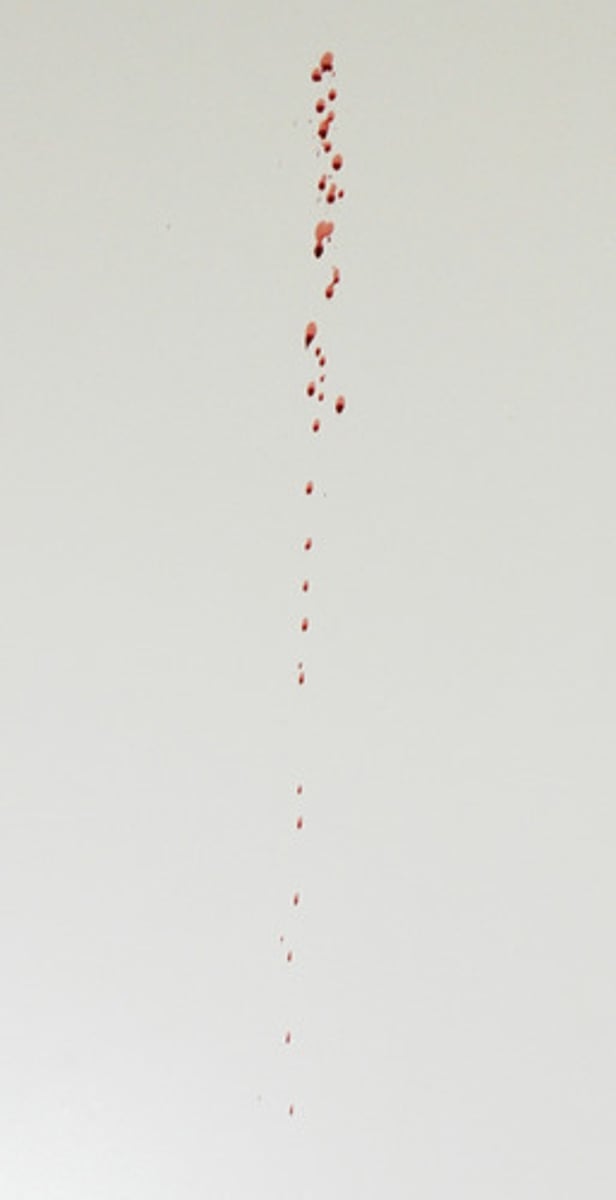
Expirated Blood
Blood that is blown out of the nose, mouth, or a wound as a result of air pressure and/or air flow which is the propelling force.
DESCRIPTION: This example was generated by taking blood and mixing it with saliva in the mouth. The blood was then forced out by coughing. Any remaining blood was allowed to flow from the mouth and fall onto the target.
In the image there are several air bubbles, lighter colored stains, and string-like stains that are not entirely linear. Note that when blood is mixed with saliva, it changes its physical characteristics.
